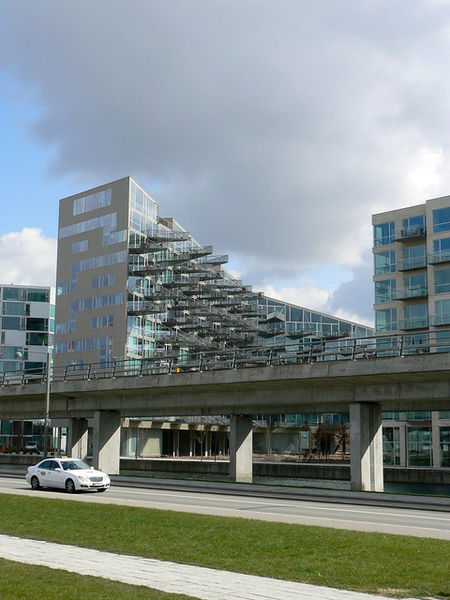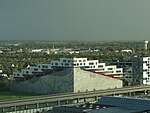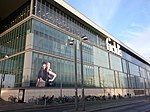Ørestad (Danish pronunciation: [ˈøːɐˌstæð]) is a developing city area in Copenhagen, Denmark, on the island of Amager.
The area was developed using the new town concept, closely linked with the M1 line of the Copenhagen Metro. Economically, income for the plan would be generated by selling the public-owned, unused land for development, thus financing the construction of the metro, and contrarily, metro access was deemed necessary for making development attractive.
While the metro is the primary public transport access, the area is also served by the Øresund Line between Copenhagen and Malmö, the motorway E20 and close to Copenhagen Airport.
Ørestad was originally planned to consist of four districts, however only three are developed: Ørestad Nord, the unbuilt Amager Fælled area (which will remain a nature reserve), Ørestad City and Ørestad Syd. Therefore, Ørestad in reality consists of two areas detached from each other. The northernmost Ørestad Nord area is coherent with inner Copenhagen. Many Copenhageners will often only regard the outlying area, the two southern districts around Ørestad Station and Field's shopping centre, as Ørestad proper.
Ørestad is neighbouring the nature areas of Amager Common and Vestamager which consist mainly of land reclaimed in the first half of the 20th century, with wetlands, bushes and self-grown small woods. These recreational areas, as well as Ørestad itself and the surrounding island, are almost entirely flat.
Some notable institutions in Ørestad are the DR Village (headquarters of the national Danish broadcaster DR), Copenhagen Concert Hall designed by Jean Nouvel, Field's (the largest shopping mall in Denmark), Bella Center (the largest exhibition and conference center in Scandinavia) and Bella Sky Hotel, the largest hotel in Scandinavia. Of these, Bella Center existed before the concept of Ørestad.










